Advertisement
Grab your lab coat. Let's get started
Welcome!
Welcome!
Create an account below to get 6 C&EN articles per month, receive newsletters and more - all free.
It seems this is your first time logging in online. Please enter the following information to continue.
As an ACS member you automatically get access to this site. All we need is few more details to create your reading experience.
Not you? Sign in with a different account.
Not you? Sign in with a different account.
ERROR 1
ERROR 1
ERROR 2
ERROR 2
ERROR 2
ERROR 2
ERROR 2
Password and Confirm password must match.
If you have an ACS member number, please enter it here so we can link this account to your membership. (optional)
ERROR 2
ACS values your privacy. By submitting your information, you are gaining access to C&EN and subscribing to our weekly newsletter. We use the information you provide to make your reading experience better, and we will never sell your data to third party members.
Biochemistry
Citrus greening is killing the world’s orange trees. Scientists are racing to help
To save a billion-dollar industry from the infectious disease, also known as huanglongbing, researchers are turning to gene editing, RNA interference, and other advanced techniques
by Cici Zhang
June 9, 2019
| A version of this story appeared in
Volume 97, Issue 23
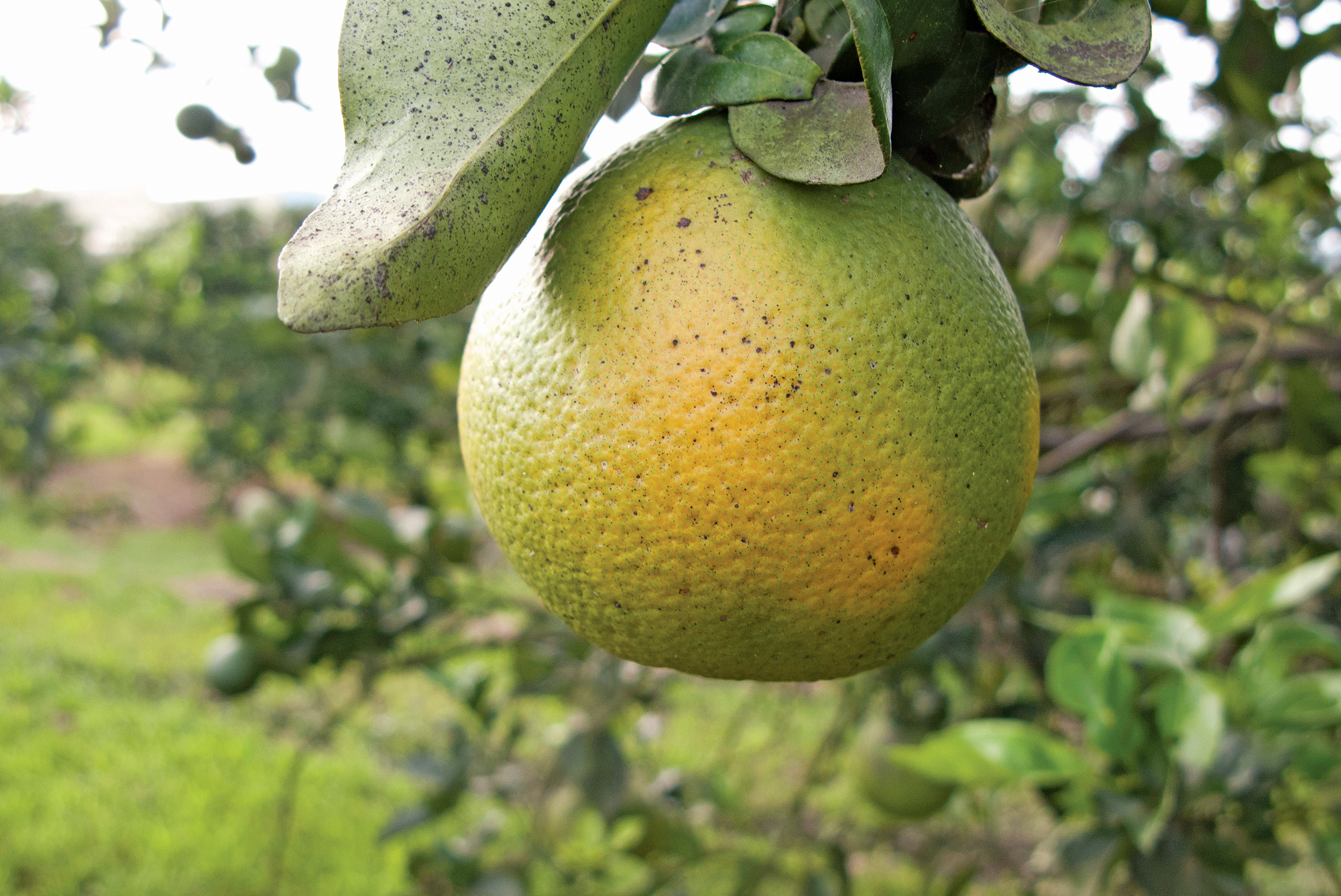
Credit: Shutterstock
In brief
First spotted in China in the early 1900s, huanglongbing infects citrus trees of all kinds, depleting them and making them unproductive. Although it has been kept relatively in check in China and Brazil, the bacterial scourge, otherwise known as citrus greening, has devastated the citrus industry in Florida and is now threatening to sink its teeth into California’s groves. Read on to learn about the strategies that growers are using to contain the disease and about longer-term solutions, such as gene editing and RNA interference, that scientists are racing to put in place.
When asked about the early days of the citrus crisis in Florida, Ben McLean III says he and his father were concerned but not panicked. The breezes in Clermont, Florida, where the McLean family juice business, Uncle Matt’s Organic, is located, had long been scented with hints of citrus, and it was unfathomable that the situation might change. Their orange trees, they thought, would be all right. They were resilient.
Three years later, in 2012, citrus greening had spread across Florida, including to the region that Uncle Matt’s calls home. It indiscriminately took hold of every type of commercial citrus variety—oranges, grapefruit, lemons, and the like—that it could reach. Uncle Matt’s eventually went from spanning more than 485 hectares to claiming only 60, both because of the disease and because of real estate development in central Florida. The business now has to supplement its orange juice with fruit from Mexico.
Citrus greening, otherwise known as huanglongbing (HLB), has wreaked havoc in Florida, says Bill Dawson, a molecular virologist and longtime HLB researcher at the University of Florida. Because of the nutrition management programs and other mitigation strategies they must now use on their trees, growers in the Sunshine State spend three times the money to produce half as much fruit, Dawson says. And in some cases, the fruit still doesn’t taste as good as it used to.
HLB spread so widely and easily in Florida that some in the business liken it to a measles outbreak. In the past decade in the US, HLB caused an approximately 21% decrease in the fresh citrus fruit market and about a 72% decline in the production of oranges used for juice and other products (Front. Plant Sci. 2019, DOI: 10.3389/fpls.2018.01976).
And HLB isn’t a problem in just the US. In China, where the disease originated, top-producing Jiangxi Province has lost 25% of its groves as of the end of 2018. In Brazil, the disease has eliminated 52.6 million sweet orange trees, a 31% reduction in area, since 2004, when HLB was first detected there.
Worse than these grim statistics is our lack of weapons against the invader. Not much is known about the bacterium responsible for HLB because scientists still can’t grow it in the lab. Although farmers are spraying antibiotics like streptomycin and oxytetracycline to protect their orchards, the drugs have a tough time killing the HLB bacteria hiding deep inside the roots of the infected citrus trees, says citrus virologist and HLB expert Changyong Zhou of Southwest University in China. With time the antibiotics might even hurt the trees by blocking the trees’ nutrient transport system, he adds. Meanwhile, public health advocates are worried that treating trees with antibiotics could ramp up resistance to the drugs in humans.
Chemical pesticides can help control the insects that carry and spread the HLB bacteria. But the insects, too, eventually develop resistance, and environmentally conscious consumers wish for safer treatment methods. To address these concerns, some scientists have turned to advanced techniques such as gene editing to tackle HLB. But these efforts won’t fix the problem overnight.
So growers are currently beating back the disease by taking proactive measures, such as removing infected trees that neighbor their groves. The lessons growers and scientists learn might just be what saves the citrus industry, especially in areas like California, where HLB hasn’t yet invaded commercial land but has been detected creeping along its edges.
A global issue
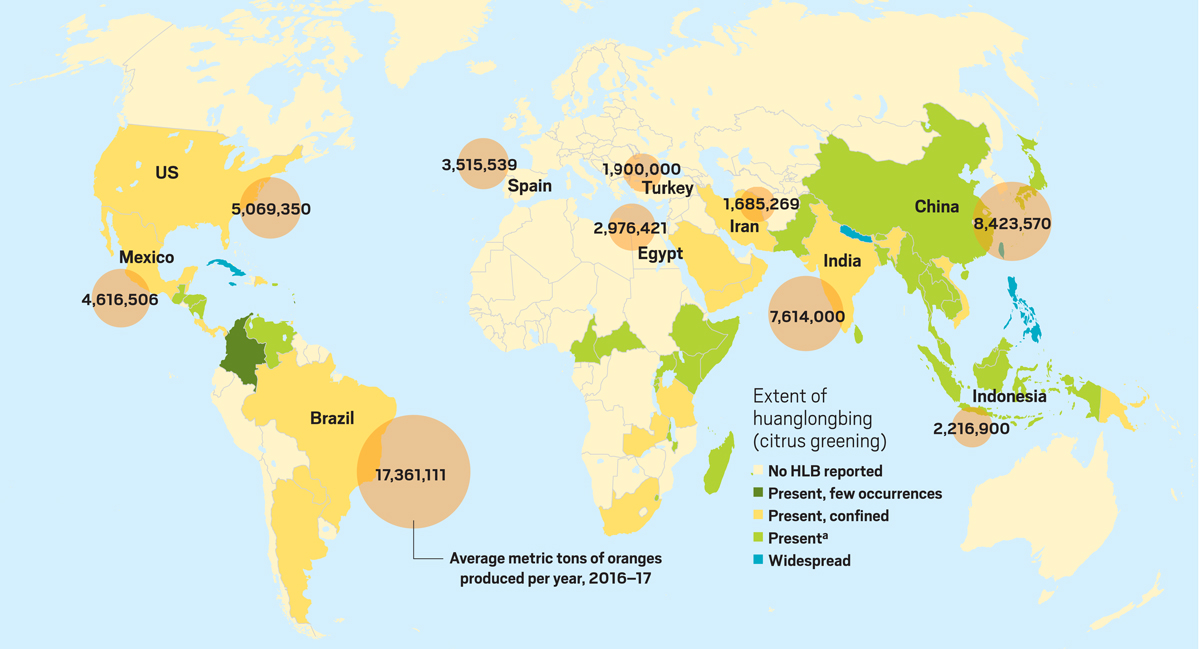

Sources: CAB International's Invasive Species Compendium 2019, Food and Agriculture Organization of the United Nations.
Note: Three species of Candidatus Liberibacter cause huanglongbing: Ca. L. asiaticus, Ca. L. africanus, and Ca. L. americanus. The Asian form is the most widespread.
a Indicates that the disease is present in the area, but to what extent may be unknown.
Creating a better tree
HLB was first documented in 1919, in Guangdong Province in south China. Observers back then saw the symptoms that mark HLB today: infected trees develop mottled yellow leaves, yellow shoots, and small, lopsided green fruits that drop early. As the fruits begin to mature, instead of signaling their ripened state by turning yellow or orange from the bottom up, the color change often starts at the top, where the fruits attach to the stem.
HLB attacks a tree’s phloem—the vascular tissue that it uses to transport nutrients—so infected trees don’t grow at the rate of healthy ones, and their canopies become sparse. Although they appear healthy initially, trees with HLB become unproductive within a few years.

Originally, growers in Guangdong called the disease huanglengbing. Huangleng means “yellow shoot” in the local dialect, and bing is the Chinese word for “disease.” Over time, however, huanglengbing morphed into huanglongbing because of variations in pronunciation. And the new version stuck. In 1995, huanglongbing became the official name for the disease during an international citrus conference held in the city of Fuzhou.
So although HLB started out describing “yellow shoot disease,” its literal translation is now, misleadingly, “yellow dragon disease,” Southwest University’s Zhou says.
Naming confusion aside, scientists have managed to untangle some facts about HLB. For instance, the culprit behind the widespread disease is a microbe called CandidatusLiberibacter asiaticus, or CLas, which comes from a family of bacteria that can wreck potatoes and other economically important crops. CLas reproduces and hides in citrus trees’ phloem.
When a flying insect known as the Asian citrus psyllid, or Diaphorina citri, feeds on the phloem of infected trees, it sucks up CLas along with the nutrient-rich liquid it’s after, becoming an HLB carrier. The insect then spreads CLas to other trees. In Africa and parts of South America, CLas has two bacterial relatives that also cause HLB. The African bacterium is transmitted by the African citrus psyllid (Trioza erytreae).
Because humans have won many battles against agricultural diseases by breeding resistant or tolerant crops, many see this strategy as the way to fight the onslaught of the HLB bacterium.
One success story is a mandarin called Sugar Belle—a hybrid of the sweet clementine and the bell-shaped Minneola tangelo. Breeders developing Sugar Belle didn’t aim to create an HLB-tolerant tree; they just wanted to make a new fresh fruit variety.
In 2009, when horticultural science professor Fred Gmitter and colleagues at the University of Florida officially released Sugar Belle, it was the worst time for a new citrus variety, Gmitter recalls. “Citrus greening was beginning to spread in Florida, and growers were being told that in 5 years all their trees would be dead,” he says. “Nobody wanted to get into a new variety, except one guy.”
That grower, Barney Greene of Greene River Citrus, in Vero Beach, didn’t cut down his Sugar Belle trees when they became infected. He stuck with it and learned serendipitously that the variety is tolerant of HLB. Greene passed down to his son “one of the most beautiful groves in Florida,” Gmitter says.
Scientists have since studied the Sugar Belle to understand how it lives with HLB. In a field trial of HLB-infected trees, Sugar Belle had the highest growth rate among all the varieties tested. And it and another mandarin hybrid produced more than twice as much fruit as each of the other citrus varieties tested (HortScience 2016, DOI: 10.21273/hortsci.51.2.127). According to Gmitter, as long as the Sugar Belle trees receive proper care, they will continue to live with the disease and produce quality fruits.
What makes Sugar Belle trees tolerant? One reason may be that they are able to grow a larger amount of new phloem after HLB infection compared with disease-sensitive citrus varieties (Front. Plant Sci. 2019, DOI: 10.3389/fpls.2019.00277). In HLB-infected trees, the phloem is like a clogged plumbing system, Gmitter explains, and what Sugar Belle does is “put a new pipe in.”
Gmitter and coworkers are studying phloem regeneration in other citrus varieties. If they can “learn how to manage and control this regeneration phenomenon,” he says, “it may be one way to fight back against the disease.”

Among those seeking to create a better tree, Nian Wang of the University of Florida wants to achieve more than tolerance of HLB. He wants to create a tree that can’t be infected by HLB in the first place.
Sugar Belle trees still harbor CLas, so a psyllid feeding on them can spread HLB to other trees, Wang explains. A completely resistant citrus tree would harbor little or no CLas.
Wang’s method of choice for creating such trees is the gene-editing tool CRISPR. Traditional breeding might one day do the job, but it can take years to breed multiple generations of trees and arrive at one that’s resistant. CRISPR is much quicker, Wang says.
With CRISPR, Wang aims to mutate so-called HLB-susceptibility genes in citrus trees. He believes that CLas forces the trees to become a haven for bacteria by manipulating the expression of the trees’ susceptibility genes. If he and his team could use CRISPR to mutate one or more of these genes, they could create a tree that protects itself from the pathogen.
He has already demonstrated this CRISPR approach for another agricultural foe, called citrus canker, a bacterial infection that causes lesions on citrus trees’ leaves, stems, and fruits (Plant Biotechnol. J. 2016, DOI: 10.1111/pbi.12677). And he is currently working on uncovering HLB-susceptibility-gene candidates with collaborators in California (Nat. Commun. 2018, DOI: 10.1038/s41467-018-04140-9). But he acknowledges that a CRISPR-edited tree that’s ready for HLB field tests is still years away.
More immediate tools
For growers in Florida affected by HLB, waiting years for a solution may not be an option. More than $4.6 billion and over 30,000 jobs have been lost in the Sunshine State because of HLB, according to a 2016 economic impact analysis.
“No matter how bad you think it is,” for people in the industry, “it’s worse than you can imagine,” says the University of Florida’s Dawson, who is a faculty member at the school’s Citrus Research and Education Center, which consults with growers.
For heavily infected areas, growers can’t just chop down diseased trees and replant pristine ones. In Florida, that would mean chopping down nearly all the citrus trees. Growers need solutions for existing trees now.
One virus-derived tool developed by Dawson looks promising, Southwest University’s Zhou says. Like HLB bacteria, Citrus tristeza virus (CTV) infects trees by infiltrating their phloem. But particularly in the US, growers have figured out how to control CTV and minimize its damage, making it a weapon in the fight against HLB.
Dawson and his group at the University of Florida are harnessing CTV’s ability to get inside trees, repurposing it as a drug-delivery vehicle. By loading the virus with genes to make HLB-killing proteins or molecules poisonous to psyllids, scientists could treat one pathogen with another.
To get the CTV particles into trees, growers would first inject a young tree with them. Then they could take shoots from that tree after it has matured and graft them onto either healthy trees or HLB-infected trees in the field, Dawson says. The engineered CTV will express its molecular cargo—the protein or the poison—as it reproduces inside the tree.
As Zhou puts it, CTV is a gun that’s just lacking its “silver bullet.”
One player in the citrus industry that is racing to forge such a silver bullet is Southern Gardens Citrus. One of the largest orange juice companies in Florida, Southern Gardens is currently seeking approval from the US Department of Agriculture to release an engineered version of CTV in the Sunshine State. It is designed to express an anti-CLas peptide derived from spinach. Called defensin, this peptide has broad-spectrum antimicrobial properties, taking down bacteria like CLas but also fungi and viruses. It binds to and pokes holes in the microbes’ cell membranes, causing them to lose vital ions and nutrients from their cellular fluids.
Southern Gardens hopes the spinach defensin will make trees immune to CLas infection, Dawson says. Meanwhile, the search for a peptide that can eliminate CLas in infected trees is still ongoing. It’s hard to target CLas because it hides inside trees and is difficult to culture and study in the lab.
So some scientists are taking a different tack when it comes to treating HLB. These researchers are taking aim at a less elusive target: the pathogen’s tiny but formidable carrier, the Asian citrus psyllid. Pinhead-sized and able to fly a mile (1.61 km) without stopping, the insect once earned a place on the USDA’s list of potential bioterrorism agents.

To kill CLas’s insect carrier, some researchers have looked to RNA interference, or RNAi, as a bullet for the CTV gun. In RNAi, a double-stranded RNA (dsRNA) sequence is delivered to a cell to bind to a specific messenger RNA sequence and prevent its corresponding protein from being synthesized. Engineered CTV can introduce the dsRNA to tree phloem, where the psyllids suck it up.
The idea has precedence. RNAi has already given rise to apples that resist browning and other optimized crops. And late last year, the first-ever RNAi therapeutic was approved by the US Food and Drug Administration for treating a human genetic disorder called hereditary transthyretin-mediated amyloidosis. Dawson says that giving CTV-based RNAi drugs to citrus trees is like gene therapy for plants instead of people.
Advertisement
In the case of HLB, Dawson and other researchers tested a CTV-RNAi particle on psyllids in the lab. By engineering CTV to express an RNA sequence targeting a psyllid wing development gene called Awd, the team caused the insects to develop wing abnormalities that impeded their flying (J. Biotechnol. 2014, DOI: 10.1016/j.jbiotec.2014.02.010).
Even without CTV, RNAi is a promising tool for controlling psyllids in a species-specific way, says Wayne Hunter, an entomologist at the USDA.
Using customized dsRNA, Hunter and colleagues have knocked out genes related to metabolism in the psyllids, increasing their mortality (Sci. Rep. 2016, DOI: 10.1038/srep38082).
Hunter says plants sprayed with dsRNA can take up the molecules and then deliver them to insects as they are feeding. The molecules can also be encapsulated in clay pellets and then placed in soil, he adds. Some companies claim to mass-produce dsRNA at a few dollars per gram, so these methods could have a cost similar to that of commercial insecticides, Hunter says.

Harnessing nature
Although the HLB researchers that C&EN interviewed emphasize that plant viruses and dsRNAs can be found everywhere in nature, they acknowledge that these tactics can be a hard sell for growers and consumers.
So some scientists are fighting HLB by harnessing nature rather than engineering it. These researchers have their sights set on anti-CLas natural products.
Katherine Maloney, an organic chemist at Point Loma Nazarene University, stumbled upon a natural antibiotic that might be used to treat HLB while she was studying a grapevine disease.
She was examining vines that had survived an attack by Pierce’s disease when she noticed that a particular type of fungus was living on them. From that fungus, Maloney’s team isolated a compound called radicinin. The researchers tested the small molecule on the bacterium responsible for Pierce’s disease and found that it inhibited the microbe’s growth (Phytochemistry 2015, DOI: 10.1016/j.phytochem.2015.03.015).

At the American Chemical Society national meeting in Orlando, Florida, in April, Maloney’s group shared evidence that radicinin could also inhibit a close relative of CLas, a surrogate for the HLB bacterium that scientists use because they still can’t grow CLas in the lab. Maloney hopes to synthesize and test radicinin in HLB-infected citrus trees in the future.
Elsewhere, scientists hunting for HLB treatments are focusing on the fungi that make such natural products rather than the natural products themselves. This is especially true in Brazil, where growers want to appeal to pesticide- and antibiotic-averse orange juice customers in Europe.
Koppert Biological Systems in São Paulo launched the bioinsecticide Challenger for managing the Asian citrus psyllid. Challenger contains a fungus, Isaria fumosorosea, that acts as a parasite to the psyllids, eventually killing them. In a yearlong trial, researchers found Challenger to be almost as effective as chemical insecticides at taking out the pests (J. Pest Sci. 2017, DOI: 10.1007/s10340-017-0846-z).
But growers in Brazil have just begun applying Challenger on a large scale, says Renato Beozzo Bassanezi, a plant pathologist with Fundecitrus (the Fund for Citrus Protection), and it’s currently more expensive than chemical insecticides. So it’s too soon to tell whether the bioinsecticide might be considered a success, he says.
Prevention, prevention, prevention
Scientists like Bassanezi think that fighting HLB should involve a combination of approaches. In other words, a single silver bullet won’t do the trick. He says farmers must implement prevention measures around their groves too.
Chinese growers have pioneered the prevention strategy, successfully managing HLB with a three-pronged approach: plant bacteria-free saplings, remove infected trees, and monitor and suppress psyllids. The approach is sometimes called “three axes” to signal thoroughness and determination.
In 2012, HLB arrived in the city of Ganzhou, Jiangxi Province, with a vengeance. It eliminated nearly 20% of the city’s orange trees during its worst year. But by enforcing the three axes, the local government has since kept the disease incidence among trees below 5% over a number of growing seasons, according to Cixiang Chen, a researcher at Jiangxi’s local fruit industry administration who specializes in plant protection. The latest helpers protecting the city’s $1.5 billion navel orange industry are helicopters that spray broad-spectrum insecticides to keep the psyllids in check.
In Brazil, rather than three axes, citrus growers have 10 commandments for managing HLB. But the core idea is the same: careful management of trees and pests. The commandments include actions like removing infected trees outside commercial orchards and coordinating area-wide sprays of insecticides, Bassanezi notes. With these types of strategies, growers have been able to stabilize the disease incidence among citrus trees at about 17% from 2015 to 2018, he says. This number is important, he explains, because it shows that such local and regional control efforts successfully halted the disease progression, which had grown exponentially from 0.61% in 2008.
Because HLB has spread so widely across Florida, infecting more than 90% of the state’s citrus trees, prevention measures that have been successful in China and Brazil won’t be of much use. But it’s not too late for California.
The Golden State has been spending more than $40 million a year for a decade to prevent the spread of HLB, says Elizabeth Grafton-Cardwell of the University of California, Riverside.
Besides removing infected trees and inspecting plant materials before moving them anywhere, the release of a parasitic wasp native to Pakistan has been particularly effective. The wasp, called Tamarixia radiata, lays eggs inside the larvae of the psyllid. As the eggs hatch, the psyllids die. This type of control will work only while the psyllid population is low, however. The wasps can keep the psyllids in check but can’t completely eradicate them.
To date, over 1,200 trees have been removed from residential areas in Southern California, which has a climate perfect for the psyllid, Grafton-Cardwell says.
“There are probably thousands more they haven’t found yet,” she adds. “So we’re getting to the tipping point where very soon [HLB] will be found in commercial citrus in Southern California.”
Dawson is more optimistic than his Californian colleague. “The disease is in backyards in Los Angeles. If they can detect it and stop the disease there, then maybe it will not get into commercial areas. And maybe it will not get into all of the backyards.”
Cici Zhang is a freelance science writer based in China.

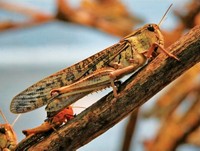
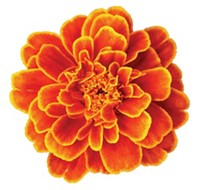
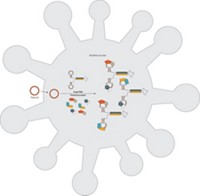

Join the conversation
Contact the reporter
Submit a Letter to the Editor for publication
Engage with us on Twitter